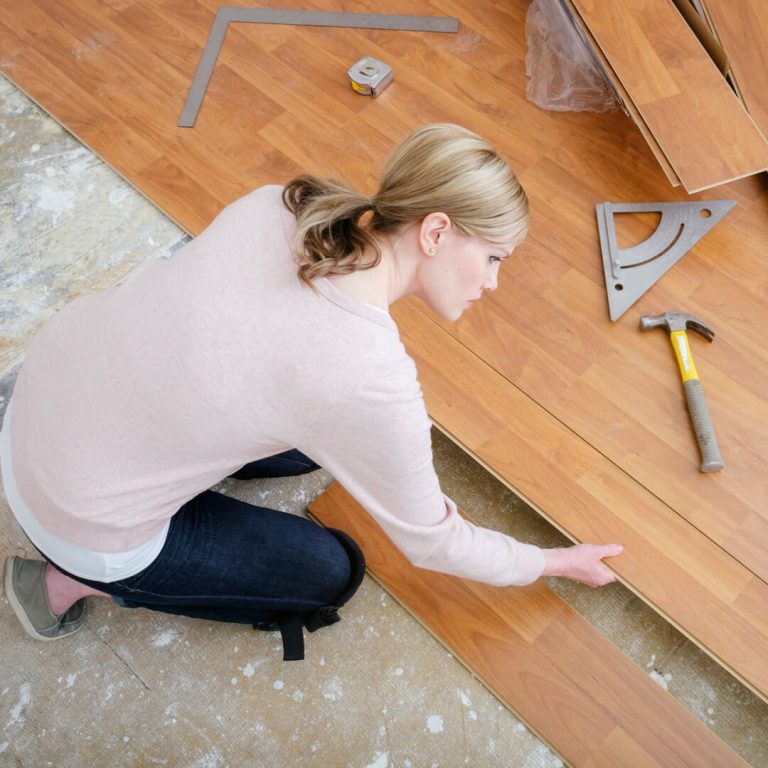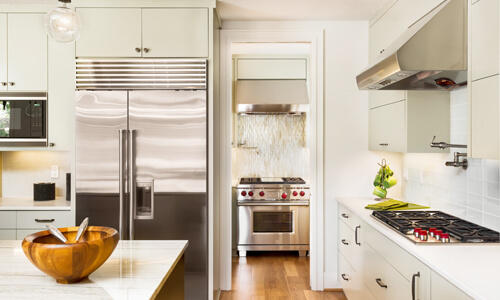HGTV remodeling shows have inspired countless homeowners to give their houses a facelift, with $538 billion spent on home renovations in 2021. (By 2025, the amount is expected to rise to $620 billion). In 2022, the average home-improvement project cost $8,484, with the top three projects being interior painting, bathroom remodels, and new flooring.
If you’re thinking about doing the brunt of the improvements yourself, the numbers are appealing: According to the Home Improvement Research Institute, an $8,454 project completed by a professional would cost $979 if it was a DIY. (A project where the homeowner does some of the work and hires a pro to do the rest, on the other hand, would cost $5,774.)
Before you get your hands dirty and reap some of these reported savings, you may want to know what home improvement projects the average homeowner can tackle and which are best left to the pros.
To DIY or Not to DIY
Among the top projects that homeowners have on their docket for the next three months: work on their kitchens, windows, driveway, exterior and roof. But are these projects that the average homeowner can handle themselves?
A general rule of thumb is that pros are best left to any projects that affect the home’s structural integrity or its electricity, gas or plumbing. It can also depend on the scope of the work and the homeowner’s experience.
Structural changes, especially those in older homes, typically require input from an architect, contractor or even a structural engineer. Projects with major plumbing or electrical work can damage the home if not done properly. Permits are often required.
Below are some projects that homeowners can do on their own, either as a DIY or to save money on the pro’s bill:
- Removing unwanted fixtures and items. Homeowners often feel comfortable removing kitchen or bathroom cabinets, light fixtures, carpeting, tile or moldings to prepare the area for contractors. A project that homeowners often do themselves is deck demolition. Removing a 200-square foot deck yourself would generally cost around $500 for dumpster rental and permits, and a fee for dumping the debris. Hiring a pro would cost $600 – $1000 for a small, ground-level deck.
- Leave it to the pros: Wall removal, which can affect the structure or the routing of electrical components, should be done by an experienced contractor.
- Painting your home’s exterior. Home Advisor estimates the cost to paint the exterior of a home is $1,811 – $4,436. And if your home is average—a one-story ranch house, for instance, that doesn’t have any odd architectural features or requires the use of more than a ladder—you probably can do this yourself.
- Leave it to the pros: Painting a multi-story home that could require scaffolding or a home that has challenging features, such as dormer windows, is a task for a professional.
- Replacing a bathroom faucet. This isn’t too challenging as long as you follow the manufacturer’s directions and have all of your tools and supplies at hand. You’ll need pliers and an adjustable wrench, as well as plumber’s putty and tape, two supply lines, safety glasses and work gloves. HomeAdvisor reports the average cost to install a faucet is $162 – $363.
- Leave it to the pros: Call a plumber at the first sign of any leak to prevent flooding.
- Installing luxury vinyl tile. Luxury vinyl tile flooring is the most rapidly growing category in the flooring industry largely due to its durability. Available in both plank and peel-and-stick formats, it is one of the easier do-it-yourself flooring projects. Professional installation of 1,000 square feet of luxury vinyl tile will cost between $900 and $1,500, and that’s just for installation. Pros will most likely also charge to remove your old flooring if you didn’t do that in advance. While there’s no avoiding the cost of materials (which ranges from $3 per square foot to higher for more expensive options), installing the flooring yourself can put the installation cost back into your pocket.
- Leave it to the pros: If your subfloor has rotted, it’s best to call in a pro to rebuild it before laying the tile.
- Installing or replacing gutters. Expect to pay a gutter contractor around $75 per hour. The average contractor will spend about seven hours completing 50 feet of gutter. Many choose to tackle this project themselves as it requires minimal tools (a measuring tape, chalk line and level, as well as a hacksaw for cutting gutter pieces to fit and a cordless drill for fastening them into place). The largest variable in this job will be the cost of materials, as gutters can range from very affordable (as low as $3 per foot for vinyl) to extravagant ($25+ per foot for copper).
- Leave it to the pros: If you’re uncomfortable with heights, then it’s important to prioritize your safety and hire a gutter contractor. This is especially true if your house is two or more stories.
Think BIY Instead of DIY
DIY is not for everyone. There’s an alternative that doesn’t require you to be an expert with a hammer or a nail gun: BIY (buy it yourself).
If you’re remodeling your bathroom and need a new tub, your contractor will buy it and install it as part of the project. But with the measurements in hand, you could strike out on your own to find a less expensive—and perhaps unique—tub perfect for your bathroom. The same with a vanity or your cabinets.
Shop the closeout sales at the big-box stores and hold on to the items until your contractor starts work. Or, shop at secondhand shops, such as one of the 900 Habitat for Humanity ReStores across the United States, which accept donations of new or lightly used appliances, building materials and more. The cost savings will vary depending on the particular deals you find and the value/quality of the appliances and materials, but may be worth the effort.
Home improvements make you feel proud of your living space and can increase your property’s values. While homeowners can handle some projects with ease, knowing your limitations is a key to success.






I was thinking of replacing my carpet & also want to change some light fixtures for my home improvement on my own. I was trying to figure out how to do it by myself. I think this work is not for me & I should hire an experienced contractor who will take care of this. I am grateful that you have given me such excellent information before starting. I will follow your guideline during work.